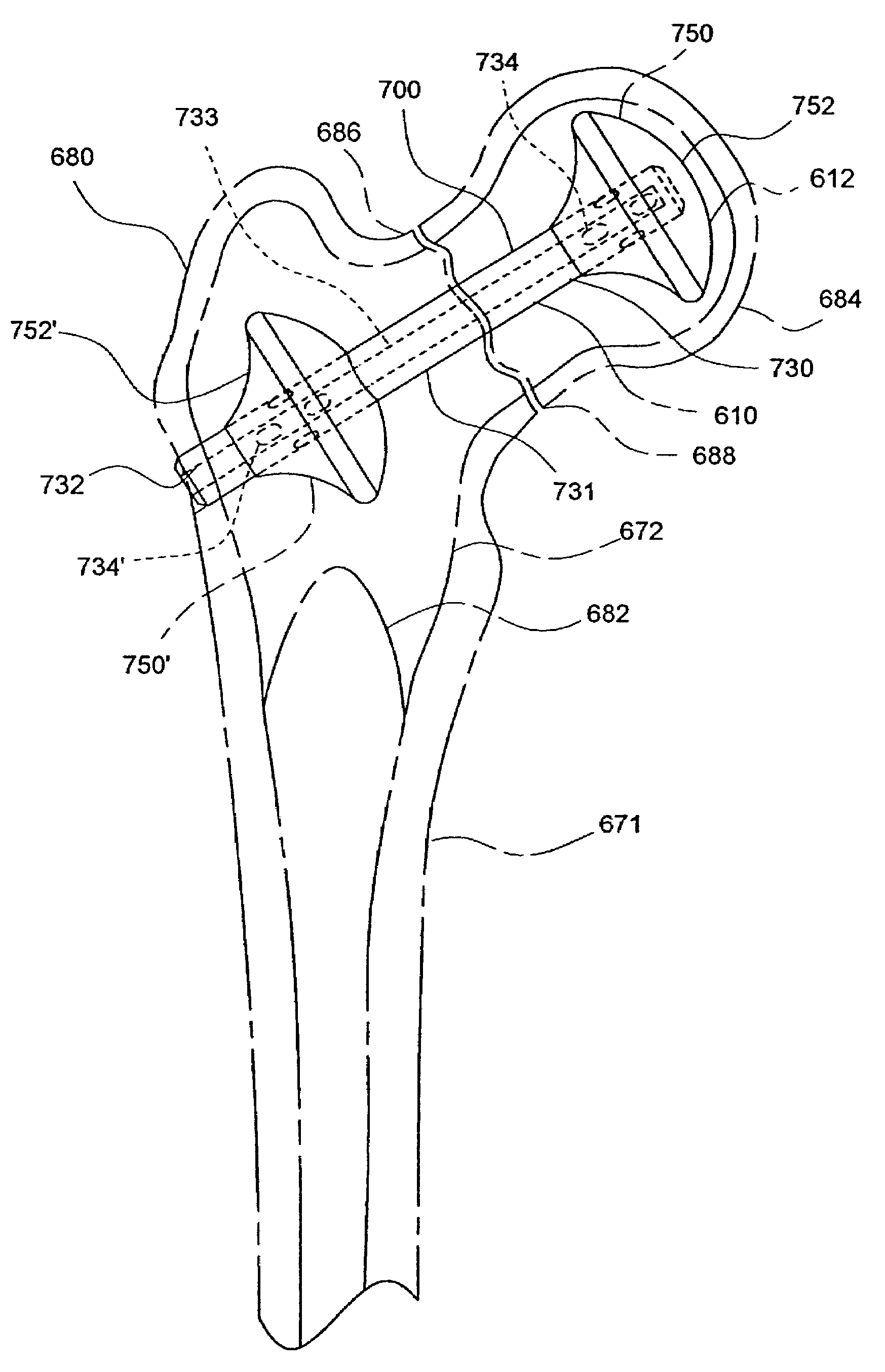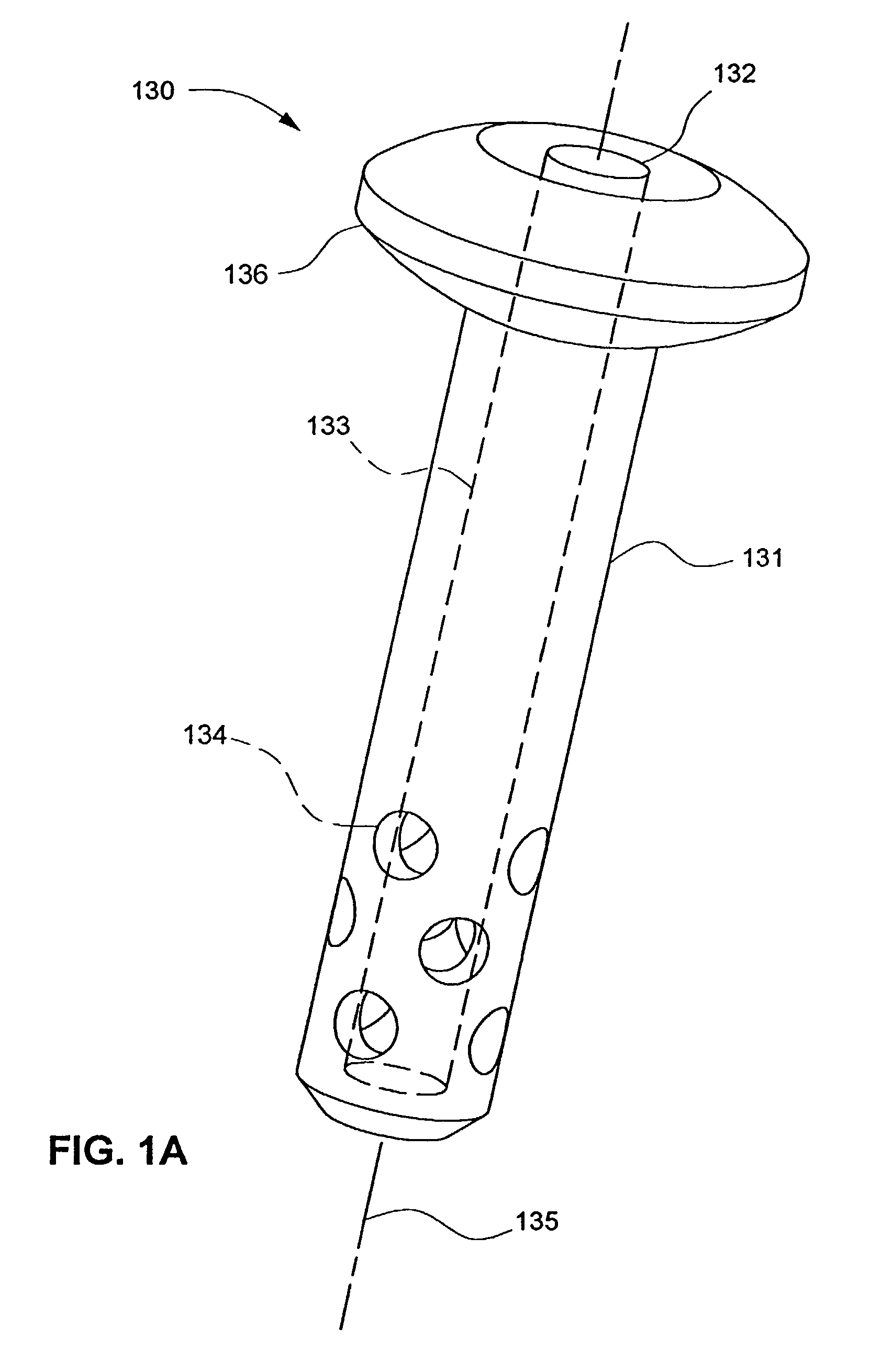Orthopaedic implant fixation using an in-situ formed anchor
a technology of orthopaedic implants and anchors, applied in the field of orthopaedic implants, can solve the problems of fractures under normal physiologic loading conditions, decreased bone mass, and increased risk of osteoporosis, and achieves the effects of reducing the likelihood of detrimental migration, reducing the likelihood of fracture, and reducing the pressur
- Summary
- Abstract
- Description
- Claims
- Application Information
AI Technical Summary
Benefits of technology
Problems solved by technology
Method used
Image
Examples
Embodiment Construction
[0032]Throughout the following description and the drawings, like reference numerals are used to identify like parts of the present invention. The term “proximal”, as is traditional, will refer to the portion of the structure which is closer to the operator while the term “distal” will refer to the portion which is further from the operator.
[0033]Numerous orthopaedic implants are broadly categorized as bone fasteners, to include screws, pins, and nails. These implants, pervasive in orthopaedic surgery, can be used as stand-alone devices to attach fractured or fragmented bone, or bone fasteners can be used as a component in an assembly or construct, such as a bone plate and screw construct. In order to focus on the spirit of the invention, the preferred embodiments of the present invention called bone fasteners will generally be shown as a stand-alone device without additional implant components and, further, without a reference to a specific application. Those skilled in the art wil...
PUM
 Login to View More
Login to View More Abstract
Description
Claims
Application Information
 Login to View More
Login to View More - R&D
- Intellectual Property
- Life Sciences
- Materials
- Tech Scout
- Unparalleled Data Quality
- Higher Quality Content
- 60% Fewer Hallucinations
Browse by: Latest US Patents, China's latest patents, Technical Efficacy Thesaurus, Application Domain, Technology Topic, Popular Technical Reports.
© 2025 PatSnap. All rights reserved.Legal|Privacy policy|Modern Slavery Act Transparency Statement|Sitemap|About US| Contact US: help@patsnap.com



